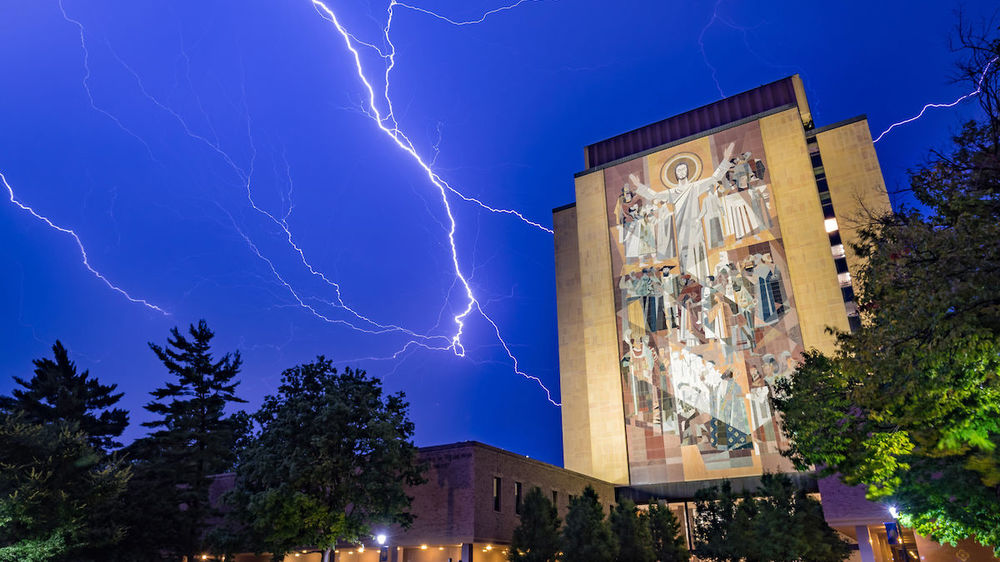Watch? Warning? What’s the difference?
The National Weather Service issues watches and warnings. According to NWS, a watch means “be prepared” and a warning means “take action.”
Severe thunderstorm watch:
Severe thunderstorms are possible. Stay informed and be ready to act if a severe thunderstorm warning is issued.
Severe thunderstorm warning:
Severe weather is imminent. Damaging winds and hail can be expected, presenting danger to life and property. Take shelter in a substantial building.
Tornado watch:
Conditions are favorable for the development of tornadoes. Stay informed and be ready to act if a tornado warning is issued.
Tornado warning:
A tornado has been sighted in the area. Tornadoes are violent and can demolish well-made structures, uproot trees and hurl heavy objects through the air. (See sidebar for safety tips.) The St. Joseph County Emergency Management Agency’s tornado warning system will activate the siren atop the North Dining Hall. There will be a steady tone for 3 to 5 minutes. During a tornado warning, the University will issue NDAlert messages if campus is threatened.
FYI: Tornado siren tests occur at 11:30 a.m. on the first Thursday of every month and consist of a one-minute steady tone, followed by one minute of silence and a one-minute wailing tone.
What to do when a tornado warning has been issued:
• Immediately take shelter in the nearest substantial building. The best protection will be in the basement, an interior room or a hallway on the lowest floor possible. Avoid windows, large rooms, auditoriums or gymnasiums.
• If feasible, put walls between yourself and the outside.
• Get under sturdy furniture and hold on to it, or crouch low to the floor and cover your head with your hands.
• Remain in a safe location until advised that it is safe to return to regular activities. An all-clear is broadcast via local media and through the NDAlert public address system.
